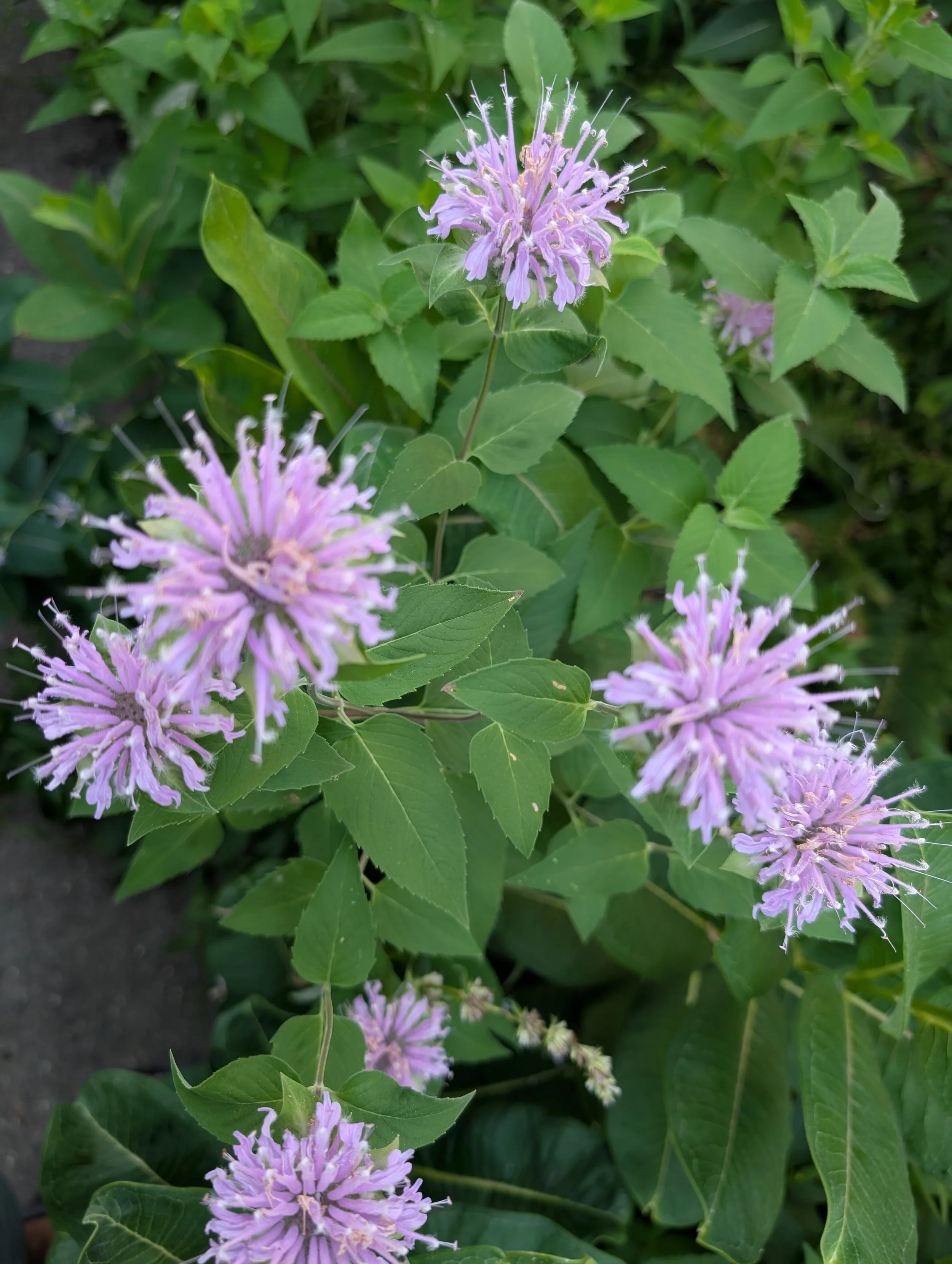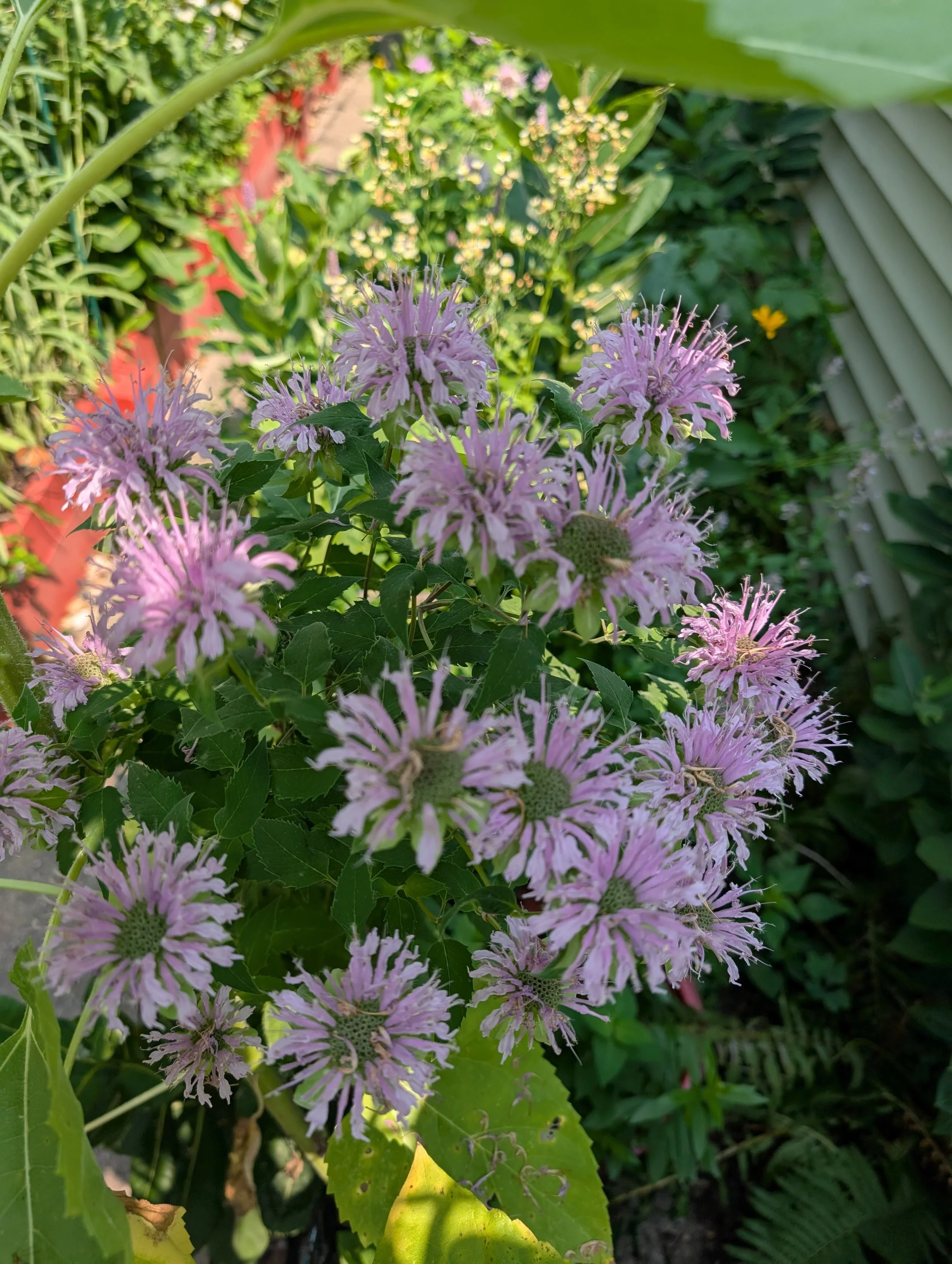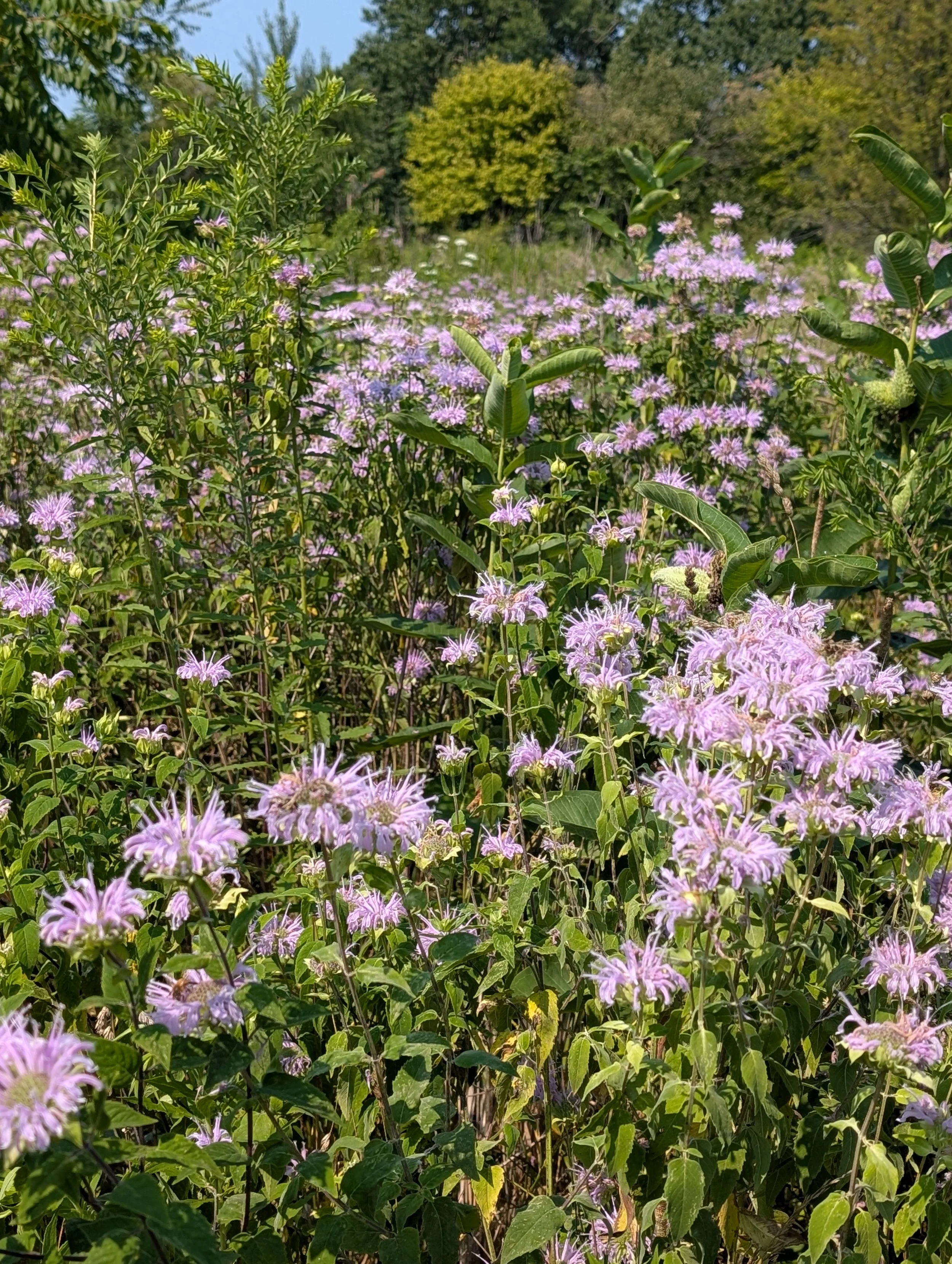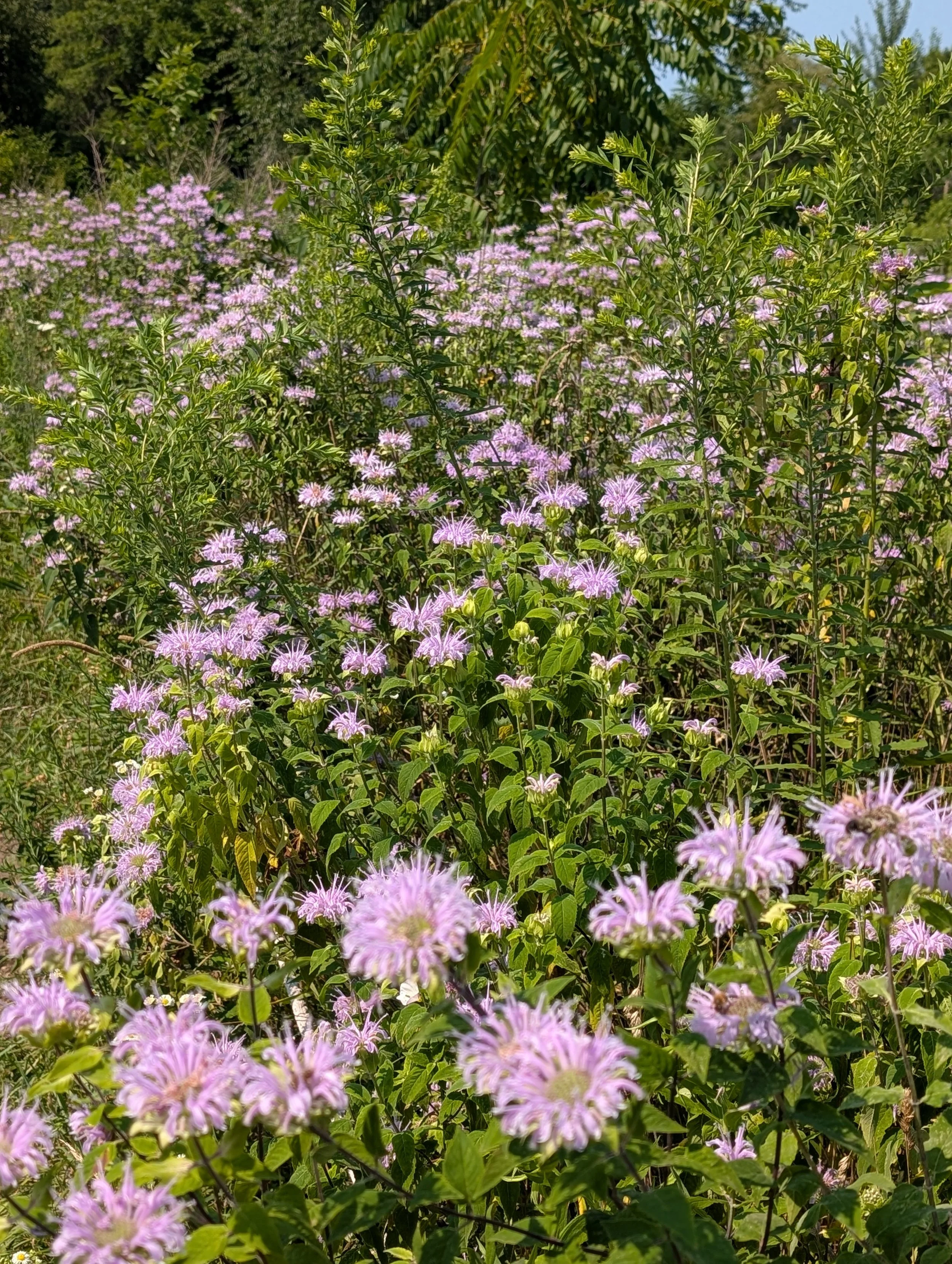Monarda fistulosa (Wild Bergamot)
Overview
Common Names: Wild bergamot, bee balm, horsemint
Family: Lamiaceae (Mint family)
Native Range: Widespread across North America, from Canada through most of the U.S., including the Midwest (Chicago region).
Habitat: Prairies, meadows, woodland edges, savannas, and roadsides—prefers sunny, well-drained sites.
Ecological Value
Monarda fistulosa is one of the most ecologically beneficial native perennials in the Midwest due to its nectar-rich flowers and role as a host plant:
Pollinators
Bees: Attracts bumble bees (Bombus spp.), sweat bees (Halictidae), leafcutter bees, and honeybees.
Butterflies: Visited by swallowtails, skippers, and fritillaries.
Moths: Supports nocturnal pollinators like sphinx moths.
Hummingbirds: High nectar content makes it a favorite summer flower for ruby-throated hummingbirds.
Predatory & Beneficial Insects
Attracts insects like long-legged flies (Dolichopodidae), hoverflies, and parasitic wasps, which help control pests in the garden.
Host Plant
Serves as a larval host for several moth species, including the Hermit sphinx moth (Lintneria eremitus).
Biodiversity Support
Dense summer blooms provide foraging continuity during mid-summer when other nectar sources decline.
Seedheads in winter can provide food for small birds and cover for overwintering insects.
Plant Characteristics
Height: 2–4 ft
Bloom Time: Mid-summer (June–August)
Flower Color: Lavender to pale purple; tubular flowers in rounded clusters.
Foliage: Aromatic leaves with a minty, oregano-like scent; deer and rabbit resistant.
Growth Habit: Spreads via rhizomes, forming clumps or small colonies.
Best Native Wildlife It Supports
Pollinators: Bumble bees (Bombus impatiens, B. griseocollis), honeybees, solitary bees, swallowtail butterflies (Papilio glaucus), and ruby-throated hummingbirds.
Predatory Insects: Hoverflies, tachinid flies, parasitic wasps.
Seed-eating Birds: Goldfinches and sparrows may forage on dried seed heads.
Specialist Insects: Certain Monarda-feeding moths and bees specialized for tubular flowers.









How to Grow from Seed
Seed Collection
Collect dry seed heads in late summer to early fall.
Gently crush to release small brown seeds.
Germination Needs
Cold Stratification: Beneficial but not strictly required; 30–60 days improves germination rates.
Light: Seeds need light to germinate; surface sow without covering or barely press into soil.
Timing: Best sown in fall (outdoors) or stratified and started indoors in late winter/early spring.
Sowing Outdoors
Broadcast on prepared soil in late fall (seeds naturally stratify over winter).
Press seeds into soil surface; do not bury.
Water lightly and let nature handle cold stratification.
Sowing Indoors
Mix seeds with moist sand; refrigerate for 30–60 days.
After stratification, sow on the soil surface under grow lights.
Transplant seedlings after frost when 3–4 inches tall.
Growing Conditions
Light: Full sun to partial sun (best flowering in full sun).
Soil: Well-drained loam, clay-loam, or sandy soils; tolerates drought once established.
Water: Moderate; drought-tolerant but blooms better with occasional watering during dry spells.
Spacing: 18–24 inches apart; allow room for clump expansion.
Maintenance:
Divide every 3–4 years to manage spread and prevent powdery mildew.
Deadhead for prolonged blooming or leave seed heads for wildlife.
Companion Planting
Pairs well with other prairie perennials and grasses:
Echinacea purpurea (Purple Coneflower)
Rudbeckia hirta (Black-eyed Susan)
Pycnanthemum virginianum (Mountain Mint)
Solidago speciosa (Showy Goldenrod)
Schizachyrium scoparium (Little Bluestem)